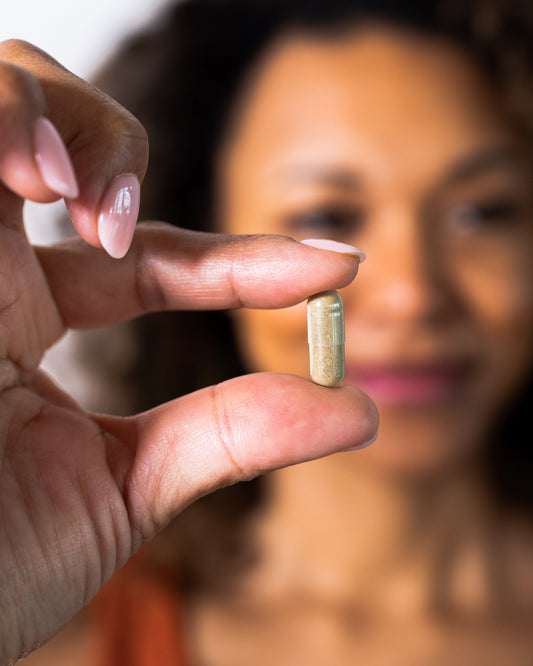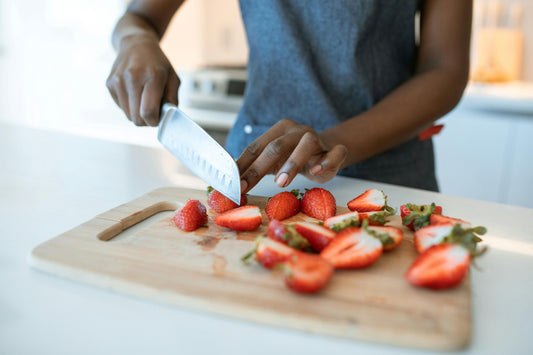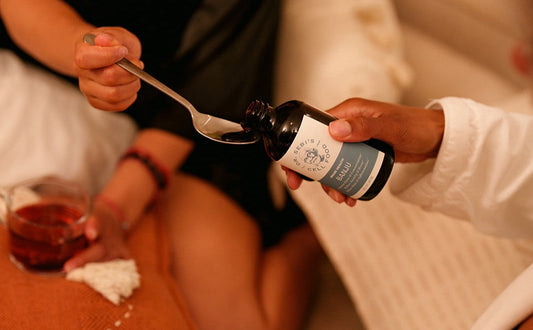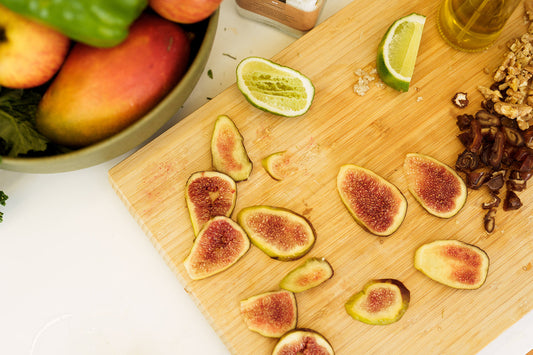Strong bones and supple joints are essential for long-term mobility. You have 206 different bones that create structure, protect organs, and store essential nutrients. Do you know how to build your bones?
“There is nothing in the world that strengthens the bones like sea moss.” - Dr. Sebi
What Are Bones?
Bones are living cells that are actively growing and repairing — right now! Babies are born with 300 bones, but by the time we reach adulthood, we only have 206. Infant bones are soft and some fuse together before getting harder with age. Bones are made from three types of tissue:
- Compact: Comprising 80% of your skeleton, this is the densest type of bone and forms an outer protective layer of hard minerals.
- Spongy: Often near joints, spongy bone makes up 20% of your skeleton and has blood vessels to carry nutrients in and out of the bones. The ‘holes’ make it look like a sponge under a microscope.
- Marrow: Inside the bone is the marrow. This soft tissue makes red blood cells (red marrow) and stores fat (yellow marrow).
What Are Joints?
Joints are the connecting points between different bones that allow us to move around, for example, to rotate an arm at the shoulder or a foot at the ankle. Joints are covered in different types of connective tissue, depending on where they’re found:
- Ligaments connect bones to each other and are made from strong elastic tissue (ankles, knees, shoulders and elbows).
- Tendons are made from fibrous tissue that connects muscles to bone.
- Cartilage is the primary type of connective tissue. Flexible, rubbery tissue that covers and cushions bone joints, and is prone to damage from inflammation.
The Best Foods for Healthy Bones and Joints
People on plant-based diets are used to putting up with "concerns" and questions from people around them, based on misinformation spread by common Western medicine and popular misconceptions. However, to say that dairy-free diets are harmful to bone health is ignorant and not based on scientific data.
The dairy industry has very successfully propagated the myth that dairy consumption is essential for optimal bone health, yet it has not been shown to prevent osteoporosis or bone fractures. In fact, some studies find that is just the opposite, and dairy can be harmful for you: milk consumption is associated with poor bone health, because it produces acidity in the body, leading to erosion and fractures.
Bone density is determined by minerals. Alkaline foods provide minerals in a format your body can absorb. Acidic foods reduce bone density by ‘borrowing’ minerals to neutralize acid. Drinking (acidic) cow’s milk does NOT build strong bones.
A healthy diet full of minerals and micro-nutrients is fundamental to preventing osteoporosis, and you can get all of them from plants. Here are the foods you need to be adding to your diet today if you want strong, healthy bones.
- Leafy Greens. Leafy greens such as callaloo, turnip greens, purslane, wild arugula, and lettuce make it to the top of the list, for their combination of calcium, iron, and alkalinity-inducing chlorophyll. One cup of cooked turnip greens has about 200 milligrams of calcium (20% of your daily goal). This Blueberry Wild Arugula Salad is delicious and nutritious, but you can also start by adding a handful of greens to your smoothies if you want to ease your way into it.
- Sour Oranges (Seville) and Key Limes. Citrus fruits can do so much more than liven up a dish. Seville oranges and key limes have been shown to prevent bone loss, so wake up your taste buds and protect your skeleton first thing in the morning with an "Orange Julius" Smoothie.
- Figs. If you're looking for bone-strengthening fruits, figs should be near the top of your shopping list. Five medium fresh figs have around 90 milligrams of calcium and other skeleton-saving minerals like potassium and magnesium. They taste great on their own, but you can increase their bone-building power by pairing them up with a glass of Homemade Walnut Milk.
- Plums and Prunes. Did you know that prunes are actually dried plums? Whichever you like better, they are both great for improving your bone density by slowing the breakdown of bone in your body. Dr. Sebi-Style "Ponche" is a delicious, comforting way to have both of those magical fruits!
- Walnuts. Walnuts contain a high amount of the mineral manganese. Manganese has been shown to prevent osteoporosis in combination with minerals calcium and copper. Magnesium, another mineral in walnuts, is important for bone formation as it helps with the absorption of calcium into the bone. If you want to add them to your daily diet, you'll love these No-Bake Walnut Date Bars — and your skeleton will love them, too.
Eat Enough
If your body is starving, it doesn’t have the resources to build and maintain healthy bone mass (as well as performing other rejuvenation functions). Remember that Dr. Sebi taught us to eat right, not less!
Supplement With Extra Minerals
Minerals give bone its strength (especially calcium, phosphorus, and magnesium.) Mineral malnutrition will weaken bones, making them prone to breaks or fractures.
Replenish nutritional stores and provide the alkaline minerals that build bones and keep your blood balanced with Dr. Sebi’s Bromide Plus — providing the missing minerals your bones need to stay strong.
More Tips for Healthy Bones and Joints
Bones are your support system — support them with alkaline minerals, proper posture, and gentle exercise. Joints are essential for mobility and physical freedom — keep them supple with spring water to help the nutrients flow.
Maintain a Healthy Weight
Excess weight places extra strain on joints and internal organs which can create issues with posture. Every pound of excess weight puts four pounds of stress on joints that carry weight (like knee and ankle joints.) Reduce the strain by maintaining a healthy weight.
Practice Proper Posture
Our joints work together as a dynamic system that allows us to move. If just one joint is not functioning properly, it can throw posture off-balance. Proper posture reduces the risk of damage or injury to your joints.
Our ancestors bent, squatted, knelt, and got down much more than we do. Try walking with objects balanced on your head to practice moving with an upright spine.
Perform Gentle Exercise
Walking, stretching, and yoga keep joints strong and flexible. Qigong and Tai Chi are effective practices for strengthening and vitalizing connective tissue and joints and realigning the skeleton with gentle, noninvasive movements.
Stay Hydrated
Joints and spongy bones need nutrition. Fluids flow in and out, bringing in minerals and fuel and taking away the waste. Long-term dehydration slows this flow, and nutrients stop moving. Keep hydrated to stay supple!



















































5 comments
What herb can I take for bone on bone in my left knee ?
Will sea moss help with bone on bone knees and hip pain. How do you consume it
Will sea moss help with broken bones pls lmk
Need help
Need help